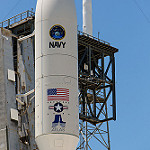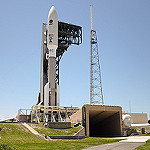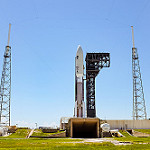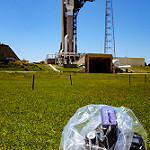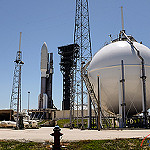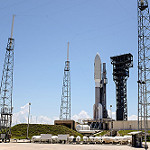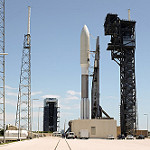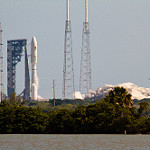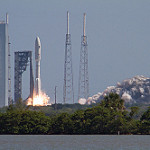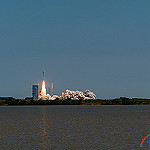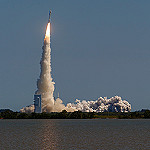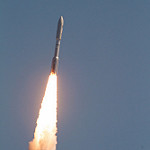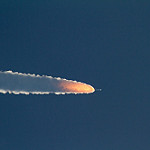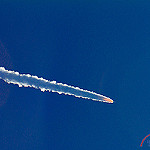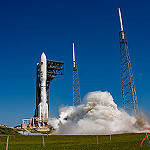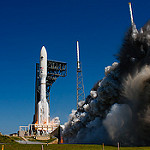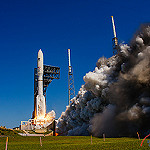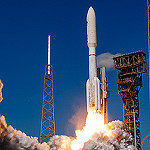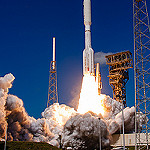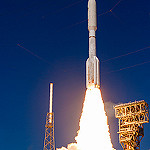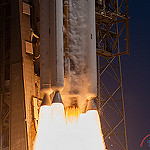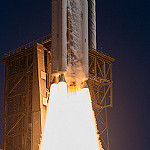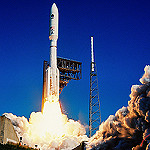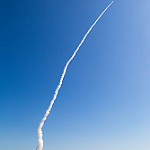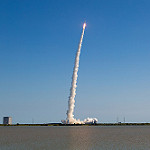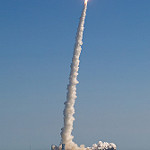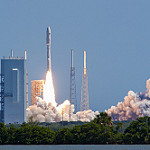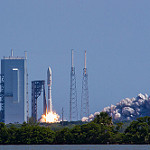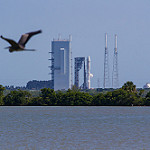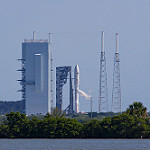MUOS-5 Completes the US Navy's Constellation
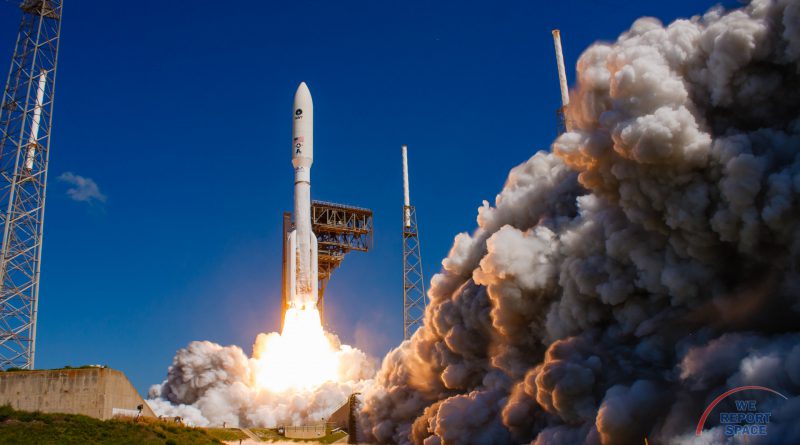
Following an internal investigation on the first stage anomaly of the Atlas V used to launch Orbital ATK's Cygnus CRS OA-6 mission in March 2016, United Launch Alliance cleared the launch vehicle to resume flight operations, starting with the U.S. Navy's MUOS-5 mission. Originally scheduled for 5 May 2016, the investigation delayed the launch by roughly six weeks, with the MUOS-5 mission lifting off at 10:30am EDT on 24 June, 2016 from Space Launch Complex 41 at Cape Canaveral Air Force Station.
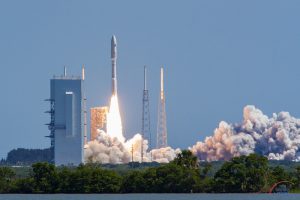
Manufactured by Lockheed Martin, the Mobile User Objective System satellite constellation consists of four operational satellites, and one on-orbit spare, with MUOS-5 taking the role of the spare. All five MUOS satellites support both Wideband Code Division Multiple Access waveform communications as well was the legacy UHF satellite communications system previously in use by the US military. The goal of the MUOS system is to provide smart-phone like connectivity to US Forces deployed world-wide, including simultaneous voice, video and mission data shared on a high speed IP-based system.
In addition to the five orbital satellites, each taking a geostationary position and orbiting over a particular region of the globe, the MUOS system also includes four ground station facilities, tasked with receiving relayed satellite data. These ground stations are located in Australia, Italy, and the United States (Virginia and Hawaii). Each ground station is assigned to a particular satellite in the MUOS constellation.
For the launch itself, clear (though somewhat hazy) skies and calm breezes meant an on-time liftoff at the very opening of the planned 45-minute launch window. Members of the news media were provided access to Space Launch Complex 41 one day prior to launch in order to place sound-activated still and video cameras, which as always is thanks to the effort of both United Launch Alliance and the 45th Space Wing Public Affairs Group.
With the MUOS satellite weighing in at 15,000 pounds, United Launch Alliance fielded the most powerful variant of the Atlas V launch vehicle in their arsenal, the Atlas V 551. The 551 variant consists of a five meter payload fairing, five strap-on Aerojet Rocketdyne AJ-60A solid rocket boosters, and a single Centaur upper stage engine. To date, United Launch Alliance has made use of the 551 variant six times, five of which lofted MUOS satellites, and the sixth being used to launch NASA's Juno mission to Jupiter -- Juno will enter orbit of Jupiter around 4 July 2016, having launched five years earlier.
The combination of the NPO Energomash RD-180 main engine and five solid rocket boosters produce over 2.5 million pounds of thrust at takeoff, and offer the capability to deliver up to 19,000 pounds to Geostationary Transfer Orbit. Prior to ULA's launch of the Cygnus ISS resupply missions, it had been theorized that the MUOS satellites had been the heaviest payloads lifted by the Atlas V rocket.
Photos

Stunning, full color photo book covering every east coast launch spanning 2014-2015, including the first-ever powered landing of a SpaceX Falcon 9 rocket.
More Info